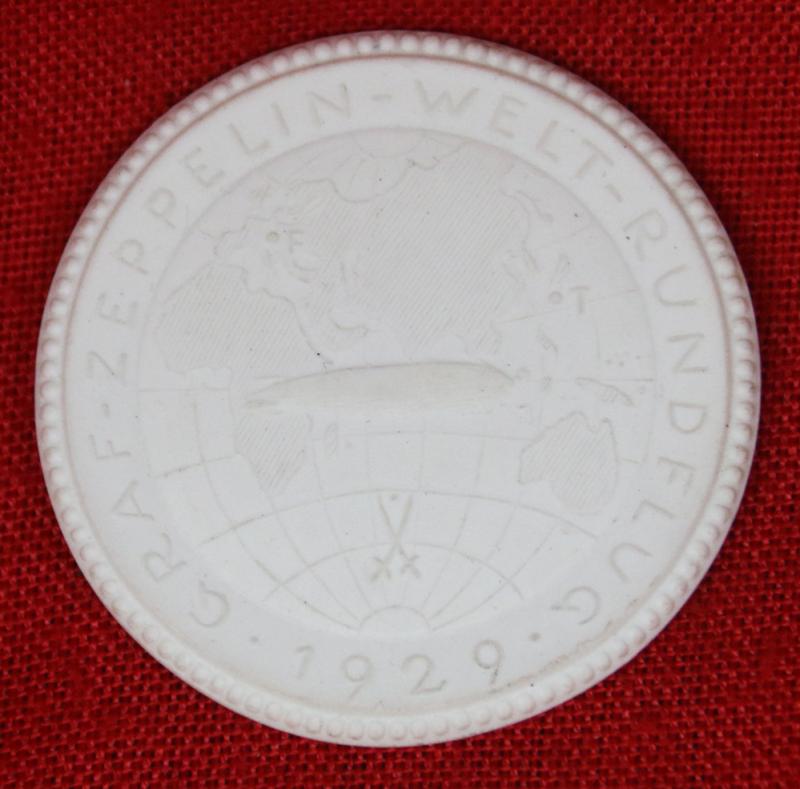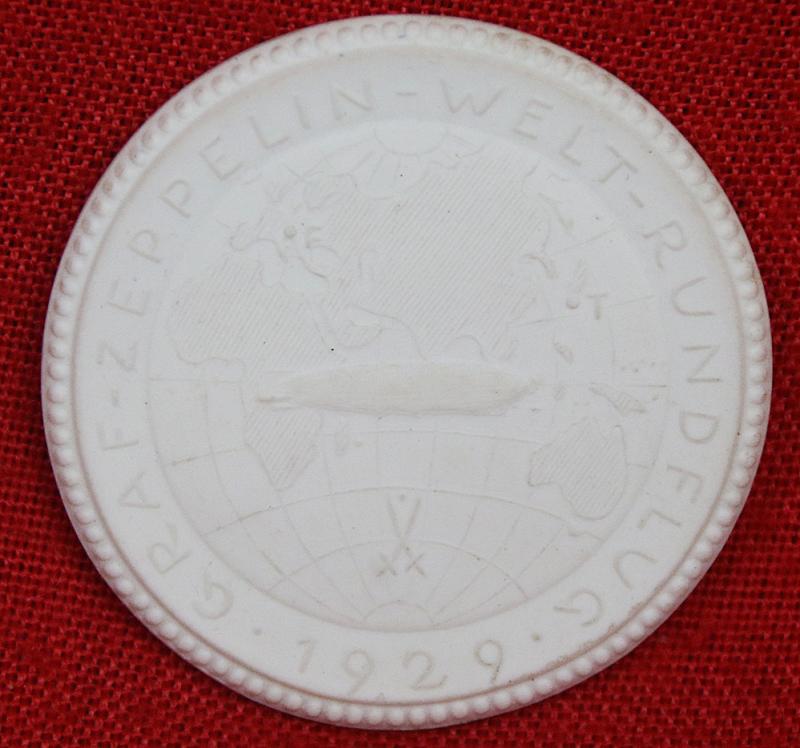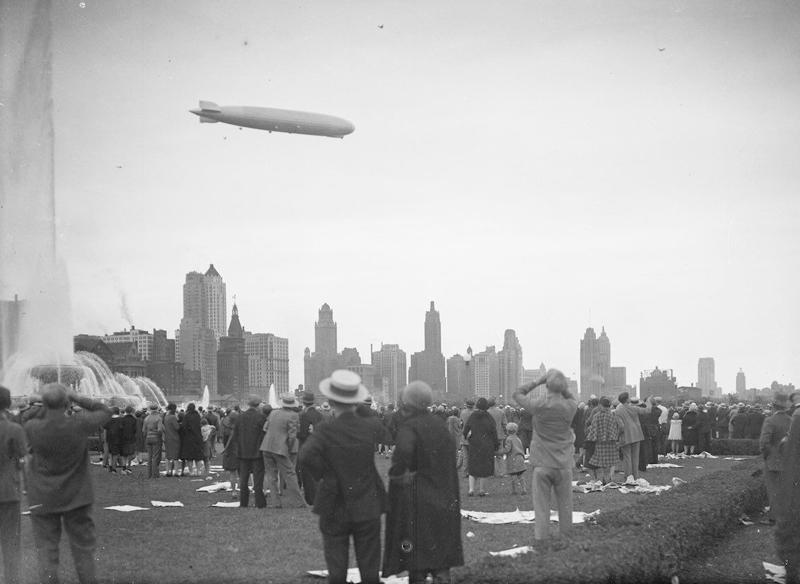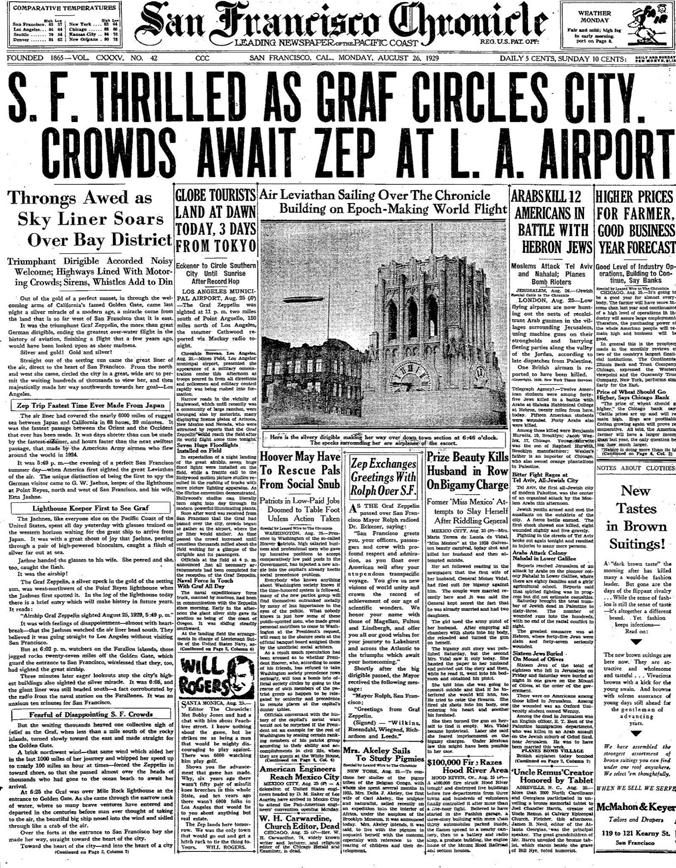1929 Graf Zeppelin Round the World, White Bisque Porcelain Meissen Medal 1929
From a small collection of most rare Meissen porcelain medals of the Graf Zeppelin round the world flight. three different variations of the same medal. Perfect for either early aviation and airship collectors, rare medal collectors, or collectors of finest German porcelain from the Weimar period
This rare medal was made by the famous Meissen factory in Germany to commemorate the first circumnavigation of the world by an airship, the ‘Graf Zeppelin’ in August 1929. Designed by Ludwig Durr but conceived and operated by Dr Hugo Eckener, Chairman of the German company Luftschiffbau Zeppelin, the rigid airship was built at their works at Friedrichshafen between 1926 and 1928 and was intended to demonstrate the viability of intercontinental commercial air travel. It was the largest airship in the world at that time.
Co-sponsored by the American newspaper magnate William Randolph Hearst, the round the world flight took off from Lakehurst Naval Air Station, New Jersey, on 8 August heading east with Eckener in command. As well as the crew there were 20 passengers on board and four Hearst staff including the Australian explorer Hubert Wilkins, a cameraman and a British reporter, Lady Grace Drummond-Hay, who became the first woman to circumnavigate the world by air. Having refuelled at Friedrichshafen the flight continued across Eastern Europe and the Soviet Union to Tokyo, then on to California, landing at Los Angeles to complete the first ever nonstop flight across the Pacific Ocean. The final leg from Los Angeles to Lakehurst ended on 29 August, three weeks after the airship had departed. Actual flying time was 12 days, 12 hours, and 13 minutes, the fastest circumnavigation of the globe at the time.
The company then used the airship on its transatlantic service and for 5 years provided a commercial passenger and mail service between Germany and Brazil. ‘Graf Zeppelin’ made 590 flights totalling almost 1.7 million kilometres and was the first aircraft to fly over a million miles. It flew a total of 17,177 hours (nearly two years), without injuring a passenger or crewman. It was operated by a crew of 36, and could carry 24 passengers, who were treated to 3 hot meals a day with fine wines in the dining room and entertainment on board. The operational spaces, common areas, and passenger sleeping cabins were built into a gondola structure beneath the airframe.
Eckener had been outspoken in his dislike of the Nazi Party so that when they took power in 1933 he was replaced by his former colleague Lehmann and the ‘Graf Zeppelin’ was commandeered for a new airline. The Nazis used the airship as a propaganda tool until it was withdrawn from service after the Hindenburg disaster in 1937. The airship was scrapped and the metal airframes melted down for military aircraft production in 1940 - a dismal end for the most successful airship of all time, about which Lady Drummond-Hay had written:
“The Graf Zeppelin is a ship with a soul. You have only to fly in it to know that it's a living, vibrant, sensitive and magnificent thing”
With its extraordinary fineness and silky matt surface, bisque porcelain exudes an unmistakable charm. Sculptural qualities, modelling skills and decorations such as reliefs are shown to full effect and are further accentuated by the material’s fascinating tactile quality. Developed in the 18th century by the French painter Jean-Jacques, the fine material rose to prominence as a substitute for ivory, alabaster and marble in the manufacture of the Château Vincennes. To this day, bisque porcelain is often compared to marble because of its unique way of diffusing light rather than reflecting it. At MEISSEN, this effect and material quality is achieved by polishing the unglazed surface of fired porcelain pieces in painstaking detail, resulting in the bisque's characteristic velvety soft surfaces.
Porcelain in its purest form. Contrary to popular belief, bisque porcelain has the same properties as its glazed counterparts in terms of density, hardness, strength and resistance. By omitting the glaze, details, such as sculptural swerves, elaborate embossing work and decorations, such as reliefs, are highlighted and given a unique tactile quality, showing off the skills of Meissen artisans in a particularly compelling way
Code: 25121
265.00 GBP





